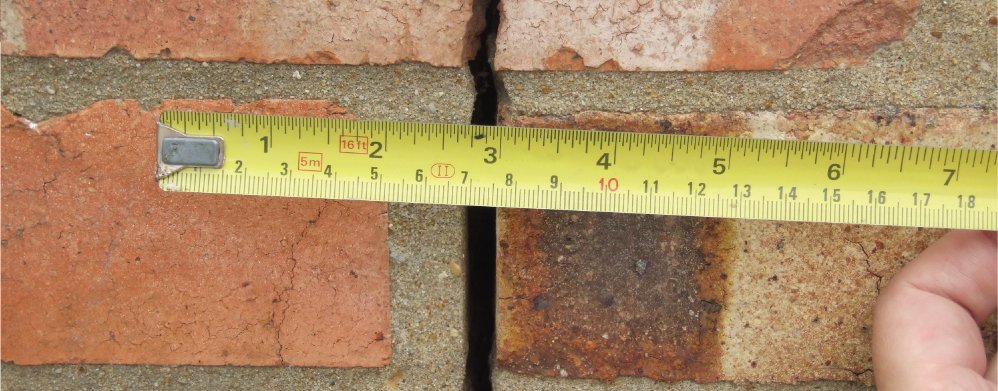
In Victoria, statutory protections exist in place to protect both private property owners and Owners Corporations from building defects.
Download Defects Management Fact Sheet >
Building works may constitute a building defect when they do not comply with one of;
- Building Contract
- Statutory Warranties as set out in section 8 of the Domestic Building Contracts Act 1995
- The Building Act or its Regulations
- The Building Code of Australia
- The Building Permit
- The Planning Permit
- Statutory Warranty.
The most commonly utilised and referred to protection is the statutory warranty provided under Section 8 of the Domestic Building Contracts Act 1995, which legislates (amongst other things) that all domestic building work must be carried out:
- In a proper and workmanlike manner and in accordance with the plans and specifications
- In accordance with and comply with all laws and legal requirements
- With reasonable care and skill
- So that the home will be suitable for occupation on completion
- Using materials that are good and suitable for the purpose
And provides that warranties last for 10 years from the date of the Occupancy Permit or the Certificate of Final Inspection. If a defect is detected or occurs after the 10 year mark, there is no further warranty, and the property owner must pursue individually.
Common vs Private property defects.
Within Owners Corporation living, there may be defects relating to either private or common property. Once a defect has been identified, your Owners Corporation Manager will be able to assist you in determining whether it is private property, or common property.
If the defect is private property, it is your responsibility and obligation to ensure that you rectify it – either by pursuing the original contractor (builder – who may in turn revert to their subcontractors; plumber, electrician, tiler etc.) or assume liability yourself. Just because the defect falls on private property, it does not mean that it will not impact other lots and/or common property e.g. a leaking balcony. Indeed, the Owners Corporation may alert you to a defect and serve a s48 Notice of Repairs, if you do not take the appropriate action to remedy.
If the defect is common property, the Owners Corporation holds the responsibility and obligation to ensure rectification takes place, either via the original contractor or by assuming liability itself.
One important point to note is that the Owners Corporation insurance does not cover building defects. Depending on the size of your property, there may or may not be Builder’s Warranty insurance for you to draw upon for private property defects. You will have received a copy of this insurance at settlement if it was taken out by the builder. If so, The Knight recommends you consult with your personal lawyer should you wish to pursue a claim under that policy for your private property.
Once a defect has been identified, if the original contractor does not agree that the works are indeed defective, The Knight recommends the following steps be considered and actioned as necessary by the Owners Corporation. A private defect may require similar steps;
- Determine whether works are urgent
- Engage a qualified expert
- Engage a lawyer
Your lawyer will advise you as to the appropriate time to involve a qualified contractor (e.g. builder, quantity surveyor etc.) to scope and cost the works required.
Engaging an Expert.
- Preferable to have a lawyer engage an Expert as all instructions to an Expert must be handed over to the other side if the matter becomes litigious and there are strict requirements as to how the Expert Report must be prepared
- The Expert Report must comply with VCAT Practice Note 2 – Expert Evidence
- The Expert Report should identify and describe the defective works and the location and specify a rectification method and the estimated costs of the rectification works
- If more defects are suspected, the Expert should be asked to inspect all of the common property to identify additional defects
- Individual Lot owners should be given the chance to have their private property inspected at their own cost
The Owners Corporation will then have two options;
- Take legal steps to hold the contractor liable (usually the Builder); OR
- Carry out the necessary rectification works and elect not to pursue the liable contractor
The decision should clearly take into account commercial considerations such as mid-to-long term cost:benefit analysis, and The Knight recommends that legal advice be sought before making a decision.
Pursuing Contractor/Builder.
- Letter of Demand
• Demand to rectify the defects
• If urgent works are required the Builder should be put on notice that the works will be carried out and given an opportunity to inspect the alleged defects - If Builder agrees to carry out rectification works a Scope of Works should be agreed
- If Builder requests an opportunity to inspect and/or engage its own Expert it should be given a chance to do so.
If the Builder refuses to carry out rectification works, the Owners Corporation should:
- Make Application to Domestic Building Dispute Resolution Victoria (DBDRV); AND
- Pass a Special Resolution to commence legal proceedings against the Builder in VCAT;
• Current legislation requires that a Special Resolution is required for the Owners Corporation to initiate legal proceedings;
• Currently, a Special Resolution requires 75% of Owners to vote in favour of the motion under consideration (i.e. the legal proceedings being proposed);
• An interim Special Resolution of 50% of Owners in favour, with no more than 25% voting against may be easier to achieve in practical terms, and after 28 days of being passed, the Special Resolution ceases to be interim.
Domestic Building Dispute Resolution Victoria (DBDRV).
The DBDRV is a new legislative requirement (April 2017) that aims to resolve as many building disputes in mediation and conciliation. Not all disputes will be resolved at this step, and there is no requirement for resolution, only to engage in the process.
Your appointed lawyer should complete the application on behalf of the Owners Corporation and will advise you as the process progresses.
A Resolution may be reached, and if so, a Record of Agreement will be signed. The DBDRV can make an order against the builder, requiring rectification works by a specific date. This order from the DBDRV may be appealed to VCAT.
If no Resolution is reached, a Certificate of Conciliation may be issued in order that the Owners Corporation may then commence legal proceedings in VCAT.
VCAT
- Make Application to VCAT
- Directions Hearing within about 6 weeks
- Interlocutory Steps (urgent court action to initiate or halt an action)
- Compulsory Conference
- Points of Defence
• Discovery
• Expert Reports
• Witness Statements
• Joinder of other parties to the hearing (joining of other parties who may be liable)
• Final Hearing
To succeed, the Owners Corporation, via its expert reports (and records of defects reporting) must be able to prove:
- That there is a building defect;
- How the building defect was caused;
- The builder is responsible;
- How the defect should be fixed; and
- Cost of rectification
The builder has a number of possible defences, and the validity and strength of these perceived defences should be raised and discussed by both your Expert and lawyer, prior to initiating legal action:
- Disagreement as to whether defects exist
- Disagreement as to cost to rectify defects
- Other parties responsible
- Architect
- Engineer
- Subcontractor
- Manufacturer of defective materials
- Surveyor
All of these factors and evidence on both sides will factor into the decision reached by VCAT.
In summary.
- Building defects are common and affect both private and common property;
- Proactivity by the Owners Corporation is vital;
- The Owners Corporation Committee remains the chief decision making body in relation to defects matters concerning common property, and is responsible for making those decisions in the interests of all owners;
- The Owners Corporation Manager’s role is to provide support to the Owners Corporation and act on Owners Corporation instructions in referring suitable building and legal experts for consultation and engaging accordingly, as well as facilitating and actioning communication between owners;
- Expert and legal advice should be sought early.

